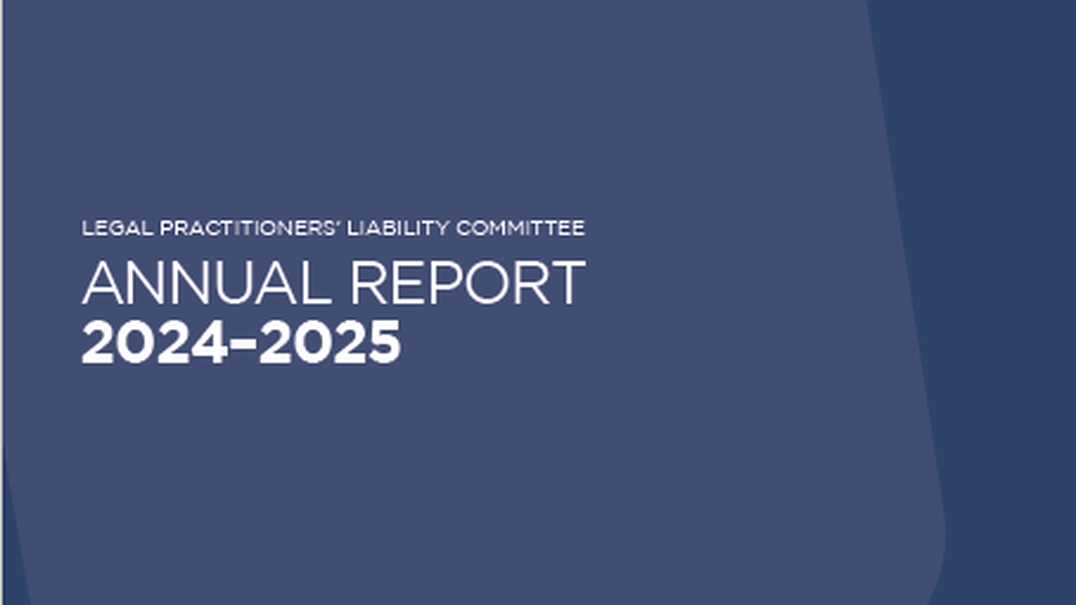Whether you are an early-career practitioner or a seasoned principal, these five high-impact practical skills are central to a lawyer’s role as a trusted adviser.
Risk management is the process to identify, assess, control and review issues that can cause loss or prevent achievement of a desired goal. Mastering these five risk management skills will help practitioners to identify, communicate and control risk in their daily practice.
Knowledge and foresight
Effective risk management begins with the ability to look ahead. One of the most important risk skills for lawyers is an awareness of what can go wrong in a matter before it happens. This skill comes from a lawyer’s deep knowledge of their practice area and the things that typically go wrong in this type of work. This kind of foresight can help practitioners to spot risks early, for the client and for themselves. The aim is to manage the risk before it becomes a problem.
To build this skill, lawyers can learn from the good work of other practitioners and take the lessons from a near miss, complaint or problem. The use of checklists, precedents and guides is invaluable in this regard. If the matter is new to you, reach out to colleagues who have handled similar matters. Run through the checklists and guides with them and ask, “What could go wrong?” The earlier risks are identified, the more options are available to both lawyer and client.
Learning from experience
Good risk management involves reflection and learning from previous work. It is easy to just move from matter to matter, but it is much more valuable take time to notice what went wrong, what nearly went wrong, and what could be done differently next time. It is more than just collecting data – it is about building wisdom.
This skill means learning to understand where things tend to break down, such as:
- a poor handover between teams
- insufficient details from the client
- delays in getting documents signed.
When patterns emerge, simple fixes and tools can be put in place, such as a checklist or specific risk advice letter, to stop the same mistakes from happening again. Reflection need not be formal, and it can be done at any time during a matter, not just at the end. For instance:
- keep notes on common pain points
- share lessons with the team
- debrief with colleagues after big matters.
The more a lawyer reflects, the better their judgment becomes, translating into fewer surprises and improved client outcomes.
Know when to ask an expert
No lawyer knows everything – pretending otherwise is a risk in itself. One of the smartest things a lawyer can do when managing a legal matter is to recognise where their knowledge ends and someone else’s begins – such as another lawyer or an external expert like an accountant, actuary or valuer. The real skill is knowing when to ask for input and how to do it effectively.
For example, many commercial transactions have taxation consequences, and the client should be advised to obtain taxation advice before deciding to proceed. Set up a risk check-in for complex matters with the key external experts. Ask, “Is there anything we haven’t thought about yet?” Identifying potential risks and referring clients for third-party advice is an important aspect of risk management.
Effective communication
Clear, timely and purposeful communication is one of the most powerful tools a lawyer can use to manage risk. Many legal risks – missed deadlines, unmet expectations, flawed instructions – often stem not from a lack of legal knowledge but rather the lawyer’s failure to receive or deliver information. Effective risk managers know how to ask the right questions, tailor their message to their audience and deal with concerns before they escalate.
To improve their skills in effectively communicating risk, lawyers should start by ensuring that all important (and often complex) legal advice is translated into plain language and confirmed in writing.
Ethical vigilance
At the core of every effective risk management strategy is a strong ethical foundation. For example, ethical steps, such as completing a conflict check before starting a new engagement, can also be embedded into workflows for ethical checkpoints.
The Australian Solicitors’ Conduct Rules are built on proven approaches to help manage risk, such as by avoiding conflicts of interest and acting in the client’s best interests. Ethics is much more than a compliance checkbox – it sets out fundamental foundational principles that underpin good behaviour to avoid risks and problems. To support ethical vigilance, firms should offer regular ethics training tailored to evolving risk areas and discuss ethical dilemmas with peers and colleagues. Reflection and learning are integral to developing a sound ethical base from which to work.
Clients want more than lawyers who know the law. They want advisers who can see around corners, spot problems early and help them navigate uncertainty with confidence. Mastering risk management is not about adding more to a practitioner’s plate. Rather, it focuses on sharpening how lawyers think, communicate and act in every matter. Building risk management capabilities does more than protect against loss – it positions lawyers as strategic partners who add measurable value.



